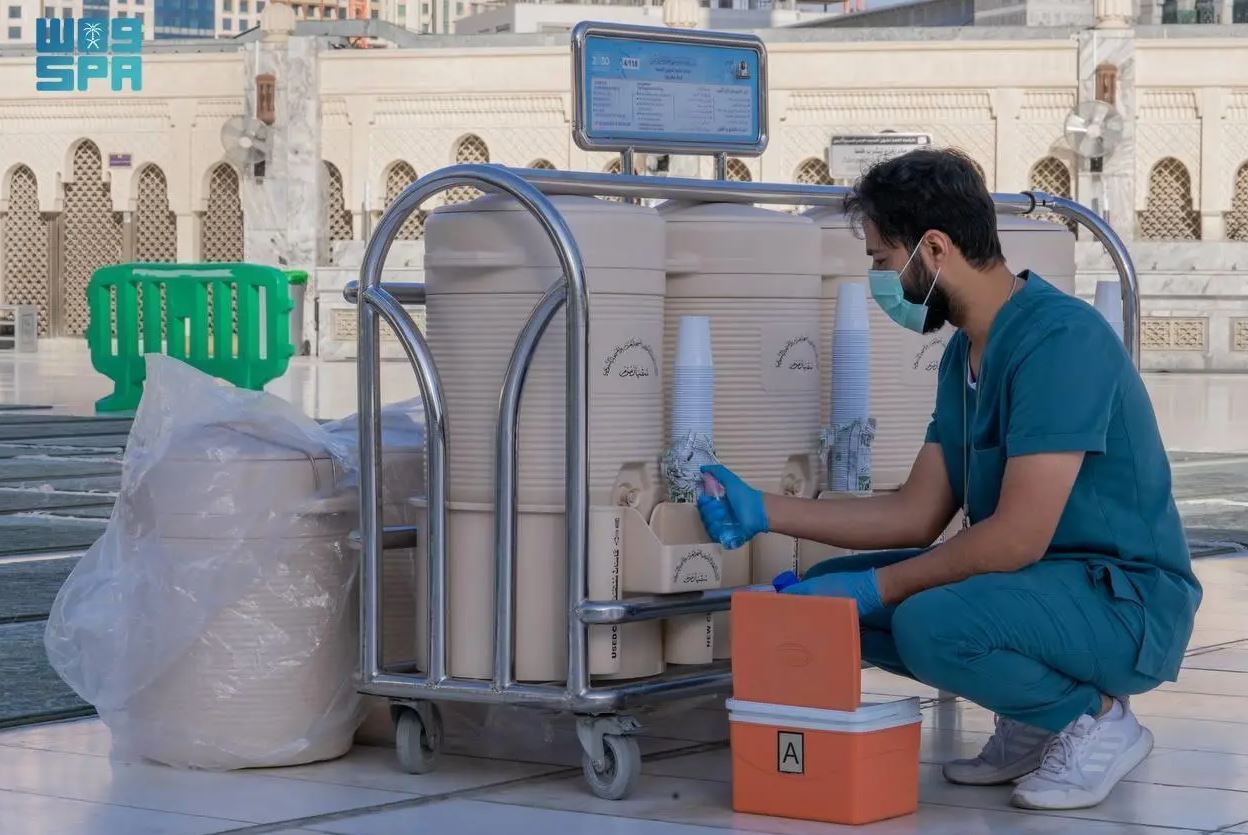
Looking after Zamzam Water: Saudi Arabia's Enduring Legacy
The sacred Zamzam water holds great significance for Muslims, and the Kingdom of Saudi Arabia has a long and distinguished history of ensuring it is taken care of and offering it.
This began with the late King Abdulaziz bin Abdul Rahman Al-Saud who, in 1345 AH, ordered the construction of a sabil (public drinking fountain) for supplying Zamzam water. The following year, he commissioned a second sabil and the repair and covering of the Zamzam well itself.
Successive Saudi monarchs have continued to look after this precious source of water. King Saud bin Abdulaziz oversaw the installation of a pump for water extraction and of a building for distribution near the well.
After the first expansion of the circumambulation area in 1377 AH, the Zamzam well was placed beneath the expanded area, which helped alleviate congestion for pilgrims.
King Faisal bin Abdulaziz further demonstrated his commitment by ordering the construction of a second basement for the well, in 1393 AH, to increase visitors’ comfort during religious rituals.
King Khalid bin Abdulaziz followed suit, ordering a comprehensive cleaning operation conducted by a team of divers.
During the reign of King Fahd bin Abdulaziz, the landmark Second Expansion Project for the Grand Mosque included a dedicated drinking and drainage water system. This featured two large pumps for Zamzam water, numerous drinking fountains, and an additional pump installed during the project's second phase.
King Abdullah bin Abdulaziz's reign saw the establishment of a state-of-the-art purification station and bottling/transportation facility. This automated and monitored system, named the King Abdullah bin Abdulaziz Zamzam Water Project, further ensured the quality and accessibility of the holy water.
Two more projects were launched, one for automated cleaning and the other for redesigning Zamzam water containers to optimize protection, flow, and ease of access.
Custodian of the Two Holy Mosques King Salman bin Abdulaziz Al-Saud continued this legacy. In 1439 AH, he approved the completion of the Zamzam well's rehabilitation and the construction of five special service passages. This phase also included thorough disinfection, debris removal, and environment monitoring around the well.
The blessed journey of Zamzam water extends from the well to pilgrims at the Grand Mosque and the Prophet's Mosque. It entails pumping Zamzam water from the well at a rate of 360 cubic meters per hour through two giant pumps. This water is then delivered to the King Abdullah bin Abdulaziz Zamzam Water Project for storage, disinfection, and onward distribution to the Zamzam tank station and the King Abdulaziz sabil station.
A network of approximately 4 kilometers of stainless steel pipelines equipped with air chambers, cleaning chambers, and control systems, safely transports the Zamzam water to designated locations.








